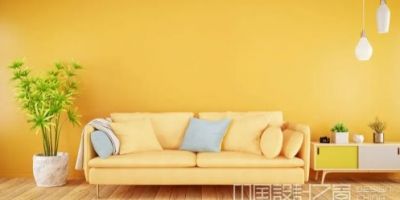

Alex Roman是一个CG艺术家。想必大家都看过他许多电影级的CG作品。比如路易斯康的图书馆,安藤忠雄设计的藏书馆等。这里我给大家翻译的是一个礼堂的教程。
有人会说,这有必要做成这样吗。当然我可以不客气的回答那些人——你活着有必要吗?对艺术品我只能万分敬仰。对于不屑一顾的人,艺术也应该给予他们以最大关爱!
当我开始做CG时,看过许多“星球大战”式的CG艺术:战争,机器,怪物...当我看到Alex Roman的作品时,感到数码图片也可以达到治疗效果——那种准宗教般的宁静与关怀!
煽情结束,这个教程在http://area.autodesk.com/index.php/t...torium/#title1(需要注册才能看)
他把教程分为五个部分:
Modelling(模型)
Materials(材质)
Lighting(灯光)
Rendering(渲染)
Postproduction(电影后期)
Modelling(模型)

I started to build it from some initial blueprints. I couldn't find much info on it except for a very basic-stage simple plan and section. Thanks to this, I was able to add a few personal details. The whole main structure and individual elements are mirrored by a central axis, so I centered the modeling around just one of the symmetries.
翻译:
开始,建模用一些原始蓝图。我找不到更多关于这个礼堂的参考,除了舞台的简单设计和剖面。
对亏这些,我就可以自己加入一些细节。整个的主体结构和个别元素用一个中心轴镜像。
所以模型就大约只有一个对称。
[Page: ]


Walls, floors, stair-steps and so on... they all are modelled from primitives or extruded splines. Mapping was also quite simple: all elements were mapped by a simple UVW Box. As I eventually attached all the steps into one single mesh, I had to boolean them with some cylinders in order to get the proper holes where I could introduce the actual stepping spotlights
翻译:
墙面,地板,台阶等等...他们都是用基本集合体或样条线(splines)挤压建模出来的。
贴图也非常的简单:所有物件的uv都是UVW BOX。最后把所有步骤attach到一个单独的mesh。
我不得不用一些圆柱体进行波尔计算(boolean),以便得出适当的凹洞来进行分级照明
[Page: ]


All of the seats come from one original model with randomized elements. Both the back and the seat itself were box modelled with an applied turbosmooth modifier while the rest of the seat elements are simple modified primitives. Once the seat was done, each group of mobile elements were attached into one and transformed into Vray proxies.
Then, I placed their own pivot point in it's logical place and grouped the seat afterwards.
Why proxies? --------> The seat itself has a lot of polys because of the seams and I had to replicate it 510 times! So the VrayProxy was the best solution...
And why did I place the pivot in the mobile axis parts? ---------> Cause we want to randomize them!
翻译:
所有的座位来自一个用“随机法原理”得到的原始模型。当靠背和座位都用box建模turbosmooth修饰细分时,其余座位也被修饰了。
一个座位完成后,attach每个可移动的元素(靠背,座椅),然后转化为Vray代理(VR proxies).于是,我在合理的位置上安置他们自己的转动支点,然后群组座椅。
为什么要代理?
因为我必须复制510次有皱纹的座位,座椅就占去了很多面数。所以Vray代理是最好的解决方法...
为什么我要把转动支点(pivot)设为可移动部分?
因为想要去随机转动座椅。
[Page: ]


After duplicating them all by arc splines and the wonderful spacingtool, I had to add a bit of chaos using some wonderful scripts from Blur Studio. Making several random selection sets with "randomselect" script, I could do some rotation variations via the "randomtransform" script (Blur Studio too)...
翻译:
用一根曲线和spacingtool把座椅复制完成后,我必须用来自Blur Studio的脚本让座位乱一点。
设置“randomselect”脚本,进行随机选择。我也用到“randomtransform”脚本来旋转座位(同样是Blur Studio)...
Materials(材质)



The scene does not have many different materials. We have basically some timber in contrast with the white fabric seats and ceiling concrete. The original idea was to get three primary colour spread over the big surfaces.
Here are some of the materials and textures used:
翻译:场景并不需要许多不同的材质。最基本的一些木材和白色织物的座椅,和天花板上的混凝土。
原来设想就是用三种色系来覆盖整个场景表面。
以上是贴图和材质的的设置
[Page: ]
接下来是Lighting(灯光)

This chamber auditorium has no natural light openings so the place had to be lit in a completely artificial way. I chose to ignore the typical stage spotlights since I was more interested in dividing spaces by the light areas: Upper cold fluorescent light against the warmer steps with small leading lights.
Each step spotlight has a vraylight in front of it and is invisible (affecting only in diffuse and specular terms). They're all instanced so as to allow for more easier and global control.
翻译:
每一台阶前的射灯都是用不可见(invisible)的vraylight(只需要影响散射(diffuse)和高光(specular)).
考虑到能够简便的全局控制灯光,所以灯光都被关联复制了。


For the upper light panels, I also cloned an instanced planar vraylight using the spacingtool. The lights are looking down and placed inside the upper hollow pits and they have one-sided sss-plastic single face in front of them which doesn't cast shadows. The no-casting shadow point is to allow the lights to "freely" affect both diffuse and specular surfaces, but avoid the enclosure panels' direct shadow while still being back-lit to show a translucent effect.
翻译:
上面的灯光面板,我同样用spacingtool关联复制了vraylight。灯光朝下,放置在凹洞里边。有一个sss塑料片在灯光前面。
这各半透明塑料片没有强制阴影。为什么没有阴影,是因为光在散射和高光表面自由散射效果(freely)。
当还在逆光显示半透明时,避免围起来的面板里有直接阴影。
Rendering(渲染)

It is important to care about balance in every composition. After deciding what was going to appear in the comp, I chose to set the shot image aspect. Afterwards, it was time to find the right balance between volumes by changing camera position, focal length, etc... All shots here are made by physical cameras because of the need of real exposure, vertical correction, etc...
Here are two good architectural photograph references. Of course all the advice won't fix things in CG, but I think it is quite good to know it anyway in general terms:
重要的是注意各成分之间的平衡。决定什么是你想在最终画面上出现的,就是要如何选择构图。
在这之后,改变摄像机的位置,焦距等,来取得一个体量之间的平衡。所有镜头都用的是物理摄像机,因为可以取得一个真实的曝光,垂直修正等等。
这里有两个很好的建筑摄影参考。当然所有建议并非可以用在CG里,但不管怎样,我觉得可以了解个大概:
1.Interior Photography Tips and Tricks
2.Architectural Photography: Examples and Tips
3.Linear workflow 'reloaded'(线性渲染流程,建议大家看一下,不过都是英文)
[Page: ]
Postproduction(电影后期)

Obviously all process steps are highly important in order to get a desired CG picture. However, I feel IMHO that postproduction work is the most personal step. In this example, I decided to go for an old-analog Lomo's Holga and Polaroid film look. All post work was done in AfterEffects.
翻译:
显然所有的过程步骤最重要的是得到一张想要的CG图像。个人认为后期制作时一个非常个人的步骤。
在这个例子中,我决定模拟出老式Lomo's Holga(lomo相机的一种)和偏振胶片效果。所有帖子都是在AfterEffects中完成。









